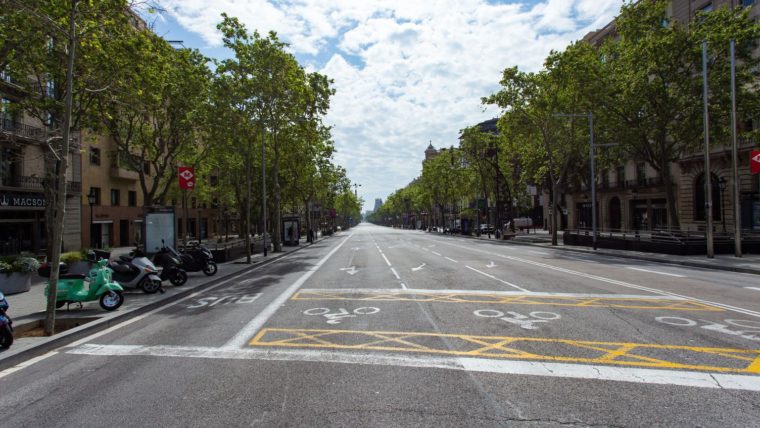The Statistical Yearbook offers a snapshot of the impact of the pandemic in the city in 2020
Compiled by the Municipal Data Office (OMD), this year’s document is downloadable, offering the possibility of downloading the four hundred plus statistics tables, distributed into twenty chapters by topic. The tables show the demographic, social, cultural and economic consequences in a year which will stand out for future generations.
The numerical vision offered by the Statistical Yearbook 2020 reflects the impact of Coivid-19, as well as the measures applied to contain its effects in spheres such as health, social and care services, economic activity, the labour market, transport, administrative budgets and sport.
The document includes a brief introductory text and a graphic summary for each chapter, facilitating the narrative of statistics and graphics. A summarised version is also available in Spanish and English.
Some of the most important data in the report are, by theme:
- Territory and environment: pollution figures hit a record low, with a drop of 30% in NO2 compared to the previous period.
- Population and demography: the number of people officially registering as living in the city bucked the trend and dropped by 0.4% compared to 2019.
- Healthcare and public health: the number of confirmed cases of Covid-19 in the city reached 78,412. The number among women was higher (53.7%). The age group with the most cases was 25-44 (over 30%).
- Social welfare: the number of people receiving assistance reached record levels.
- Teaching: the number of students in quarantine stood at 17,917 in the period up to the end of October.
- Culture: the percentage of face-to-face users at libraries and activities for cultural dissemination at community centres dropped by over 60 per cent compared to 2019.
- Sports: there was also a sharp drop in the number of users at sports facilities (-47%).
- Safety and protection: crime recorded by the Catalan police (Mossos) dropped by 42.1%.
- Justice: courts handling cases of violence against women showed a drop of 4.9% in crime in 2020.
- Work and manufacturing: the number of work contracts signed halved compared to 2019.
- Economic activity and finance: the economic activity of recent years was interrupted abruptly and shrunk by 11.6%.
- Income, consumption, commerce and prices: average family incomes dropped by 14%.
- Tourism and economic promotion: here there was a notable decrease, with 76.8% fewer tourists.
- Transport and traffic: the volume of urban journeys on public transport forming part of the integrated pricing system dropped by 47% compared to the previous year.
- Buildings, housing and the property market: the pandemic punished the buoyancy of the property market, with the number of contracts giving access to housing dropping by 22.3% compared to 2019.
- Knowledge society: teleworking expanded during the lockdown, with 58% of workers able to do it. In addition, nearly 7 out of 10 school pupils under the age of 16 were able to do online schooling.
- Municipal administration: another increase, at least in part due to mobility restrictions, was that of website procedures, which rose again, in this case up to 6%.
The Statistical Yearbook is the latest in a long series which started in 1902. As with other years, its goal is to help towards knowledge of the city’s territorial, demographic, social, cultural and economic reality. You can find previous editions on the OMD’s website for Statistics and the Dissemination of Data.
The newly presented edition includes data separated by territory, by districts and in some cases by neighbourhoods, and by temporality, in series of various years. For more in-depth information go to the website for the Department for Statistics and the Dissemination of Data.




